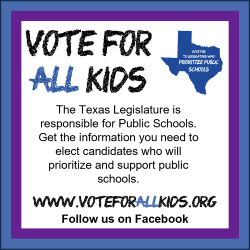School Vouchers: Clarifying some Vocabulary
By Ashley Bean Thornton
As you are having conversations with your fellow voters about School Vouchers, it’s important to clarify some of the most common school voucher vocabulary. Here’s a little guide.
What is the difference between a “School Voucher” program and “School Choice” or “Parent Choice” programs? – In many cases these terms are used more or less interchangeably. They are generically used to describe programs that allow public funds (tax dollars) to be used to pay for K-12 students to attend private schools, including religious schools, and/or to pay for homeschooling expenses. People who don’t like this idea (like me) tend to use the term “Voucher.” People who do like the idea tend to use the terms that include the word “choice.” As you might imagine, “choice” tested much better than “vouchers” for marketing purposes.
What’s the difference between a “Voucher,” and an “Education Savings Account (ESA)?” – These terms are often used interchangeably as well, but technically there is a difference. Vouchers tend to be a check written directly to the private school and can usually only be used to pay for tuition. An Education Savings Account (ESA) is typically money given to the parent, usually in the form of a debit card, that can only be used for certain education related expenditures – for example, tuition, uniforms, books, transportation to and from school, etc.
What is a “Tax Credit Scholarship/ESA Program?” – In these kinds of programs, the state gives a tax credit to donors who give to a scholarship fund. The state then uses this fund to provide scholarships to K-12 students who want to attend private schools. The state determines the criteria for distributing the scholarship/ESA money.
What is “universal” school choice? – Some school voucher programs limit participation based on household income, disability status, whether or not the student is zoned for a “failing” school, or other factors. Other programs –called “universal” programs – allow families to use vouchers regardless of income or other factors. Past experience in other states shows that Universal voucher programs generally end up mainly serving families who can already afford private schools. They have been associated with sky-rocketing costs. Here is an example from Arizona: Arizona School Voucher Program Causes Budget Meltdown — ProPublica.
All voucher programs are not created equal. – Twenty-nine states and Washington D.C. have some kind of voucher program, but they vary widely. Wyoming, for example, offers an ESA program to households with incomes less than 150% of the Federal Poverty Guidelines. Arizona, on the other hand, recently expanded their ESA program to all students regardless of income. They also have a Tax-Credit Scholarship program. You can explore which states offer which kinds of programs at this link provided by EdWeek: Which States Have Private School Choice? (edweek.org)
So, what is Texas thinking about doing? – Well, we won’t know the specifics of what is being proposed until the legislature convenes in January and an actual bill is proposed. Here is what happened in the last session if that gives us any indication of what is to come:
SB1, an act relating to the establishment of an education savings account program, passed the TX Senate, but did not receive a vote in the TX House. It was a bill that would have provided an $8,000 Education Savings Account (ESA) for recipients. It was a Universal Choice plan in that anyone could apply for the ESA. It did provide that low-income students, students from low-performing schools, and students with disabilities were to be given priority in the event that a lottery became necessary due to more applications than the budget allotment could cover.
The TX House considered, but ultimately rejected, HB1, a more wide-ranging bill regarding primary and secondary education that included, among other things, an ESA program. The program proposed was a Universal Choice program similar to that proposed in SB1 but made some adjustments to the amount proposed per participant and the accountability testing requirements. HB1 also proposed a sunset date for the ESA program at which time it would end if not re-authorized. This bill was ultimately amended to strip out the ESA program. Once that section was stripped out, the entire bill was withdrawn.
Governor Greg Abbott is determined to pass a school voucher program in Texas despite the fact that these programs have been shown over and over again to be unpopular, particularly in rural school districts. We will almost certainly see new voucher bills presented in the new legislative session in 2025. Let’s elect candidates who will vote NO on vouchers, at least until we get the funding we need for public schools!
